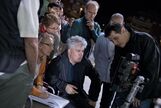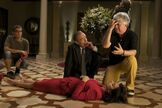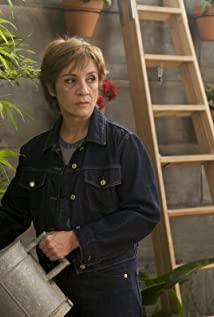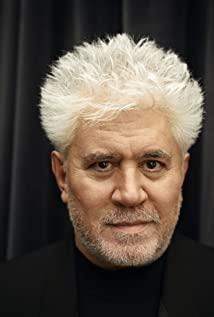However, behind Iberia's passionate and unrestrained colors, I have been thinking about an uncomplicated question:
What kind of ending does a tangled and complicated but purely simple love story need? Whether it’s happiness to the point of dregs or a tragedy, it seems that the correct answer has lost its meaning as a symbol.
For more than 10 years, Lao Mo has been facing this troublesome problem. From Hable con ella (Talk to her) at the peak, to La mala educación (Bad Education) for love and destruction, to Volver, Lao Mo has always used different forms to express a relatively similar theme group: love, betrayal, Desire, feminine. In the explorations and experiments time and time again, love seems to have become a quantifiable substance, which was continuously measured and experimented by Mo in the research room using various methods.
Many people complained that broken embraces were too long. After Penelope Cruz left, the film narrated too many plots unrelated to the theme. If we carefully observe Lao Mo's plot arrangement in the last 30 minutes, we will find that Almodovar has taken special care for the plot arrangement after Penelope Cruz's departure.
Act 1: After the old director was blinded and struggling to walk up the stairs, Lao Mo had the first chance to end the movie. If the movie ends here, its structure will be very concise and complete, while enhancing the sensational effect of the love story. But in the last 30 minutes, Mo added a lot of scenes about the wife of the old director played by Blanca Portillo. Whether it is her entanglement between revenge and forgiveness, or the guilt that has lasted more than ten years after the accident, these plots once again reflect Lao Mo's concern for women and humanity. In Lao Mo's film, everyone is not superfluous, and each character has its own complex emotions and value of its own existence, which is once again reflected in broken embraces.
Act 2: The last scene where the old director touched the DV camera and the hero and the protagonist were together. This is also one of the most sensational scenes in this movie. When this scene faded away, I was deeply moved and almost determined that another classic of Lao Mo was about to end. But Lao Mo didn't think so. After that, the movie lasted for dozens of minutes, and my anxiety continued to increase: Will this movie repeat the problem of many literary and artistic movies today-procrastination, and will it end with a vulgar plot like the old director committing himself to himself.
The story that shocked me the most in Act 3: broken embraces was Penélope Cruz's last comedy edited by the old director. The appearance of this comedy made me discover a problem that I had been neglecting for more than an hour because of the love story between them: what kind of movie they were shooting. At the same time, this comedy made me admire Lao Mo's sense of humor even more. In fact, there are more joyful scenes in this movie than in any previous work by Lao Mo. The audience's knowing smiles and trivial chuckles are often inadvertently revealed. Although the concept of this kind of play is not new now (see adapted screenplay, New York synonymy), it can be seen from it that the accumulation of years has made an old director who has experienced the vicissitudes of life and emotional torment have a sense of tragedy. A more mature understanding and perception. When intermittent laughter is heard in the theater from time to time, the opposition and impact of the dual effects of tragedy and comedy also give this movie a deeper meaning and tension.
When Almodovar announced his return, Madrid was boiling, Spain was boiling, and Europe was also waiting for the arrival of the most influential cultural export product of the Iberian Peninsula. However, as Lao Mo continued to grow old, his description of delicate emotions and attention to details have never diminished. Even though Penélope Cruz can have the heartbreaking beauty, even if the old entrepreneurs can have the wealth of the enemy, but after everything is gone, everyone’s life is invariably the most suitable for survival. The way continues to live ordinary and pale. "I am not trying to re-release this movie, but even if I lose my eyes now, I will finish this movie." Although this sentence is a bit bleak, it embodies Almodovar-style inspiration. Lao Mo's understanding of life nowadays.
View more about Broken Embraces reviews











